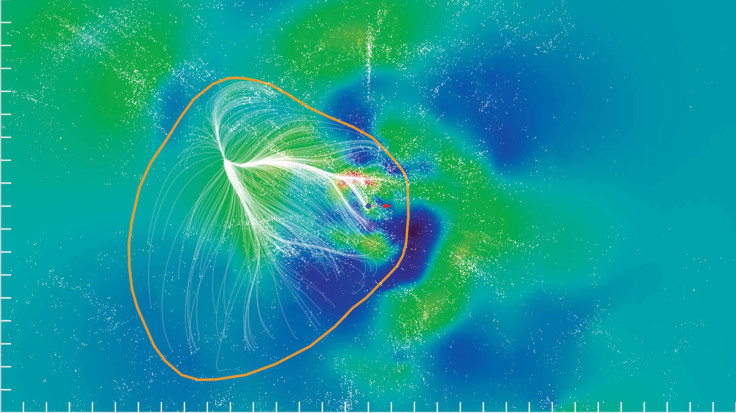Earth's New Home: Astronomers Discover Supercluster of Galaxies 'Laniakea' Contains Milky Way

Astronomers have determined that the Milky Way is part of a newly identified supercluster of galaxies, dubbed "Laniakea" - meaning "immense heaven" in Hawaiian.
The discovery was made using the National Science Foundation's Green Bank Telescope, among others and clarifies the boundaries of our galactic neighbourhood, establishing previously unrecognised linkages among galaxy clusters in the local Universe.
"We have finally established the contours that define the supercluster of galaxies we can call home," said lead researcher R. Brent Tully, an astronomer at the University of Hawaii at Manoa.
"This is not unlike finding out for the first time that your hometown is actually part of much larger country that borders other nations."
The Laniakea supercluster is 500 million light-years in diameter and contains the mass of one hundred million billion suns spread across 100,000 galaxies.
Superclusters are among the largest structures in the known Universe. They are made up of groups, like our own local group, that contain dozens of galaxies, and massive clusters that contain hundreds of galaxies, all interconnected in a web of filaments. Though these structures are interconnected, they have poorly defined boundaries.
The researchers are proposing a new way to evaluate these large-scale galaxy structures by examining their impact on the motions of galaxies. A galaxy caught between structures will be caught in a gravitational tug-of-war, caused by the gravitational forces.
By using the telescopes to map the velocities of galaxies throughout our local universe, the team was able to define the region of space where each supercluster dominates.
"Green Bank Telescope observations have played a significant role in the research leading to this new understanding of the limits and relationships among a number of superclusters," said Tully.
The Milky Way resides in the outskirts of one such supercluster, whose extent has for the first time been carefully mapped using these new techniques.
This study also clarifies the role of the Great Attractor, a gravity anomaly in space that influences the motion of our local group of galaxies and other galaxy clusters.
Within the boundaries of the Laniakea Supercluster, galaxy motions are directed inward, in the same way that water streams follow descending paths toward a valley. The Great Attractor region is a large flat bottom gravitational valley with a sphere of attraction that extends across the Laniakea Supercluster.
The name Laniakea was suggested by Nawa'a Napoleon, an associate professor of Hawaiian Language and chair of the Department of Languages, Linguistics, and Literature at Kapiolani Community College, at the University of Hawaii. The name honours Polynesian navigators who used knowledge of the heavens to voyage across the immensity of the Pacific Ocean.
Elmo Tempel, an astronomer at the Tartu Observatory in Estonia, said the name was what "one would expect for the whopping system that we live in", the Guardian reported.
The research was published in the journal Nature.
© Copyright IBTimes 2025. All rights reserved.






















